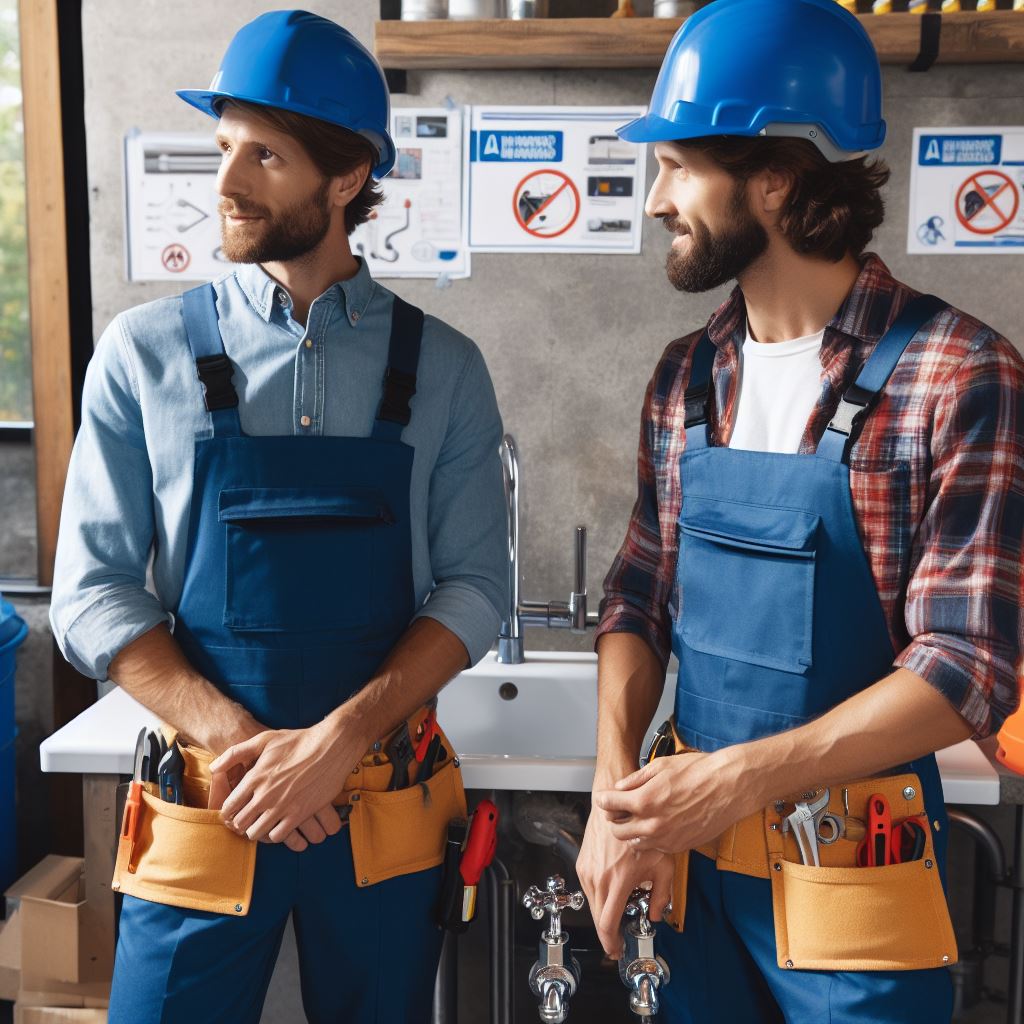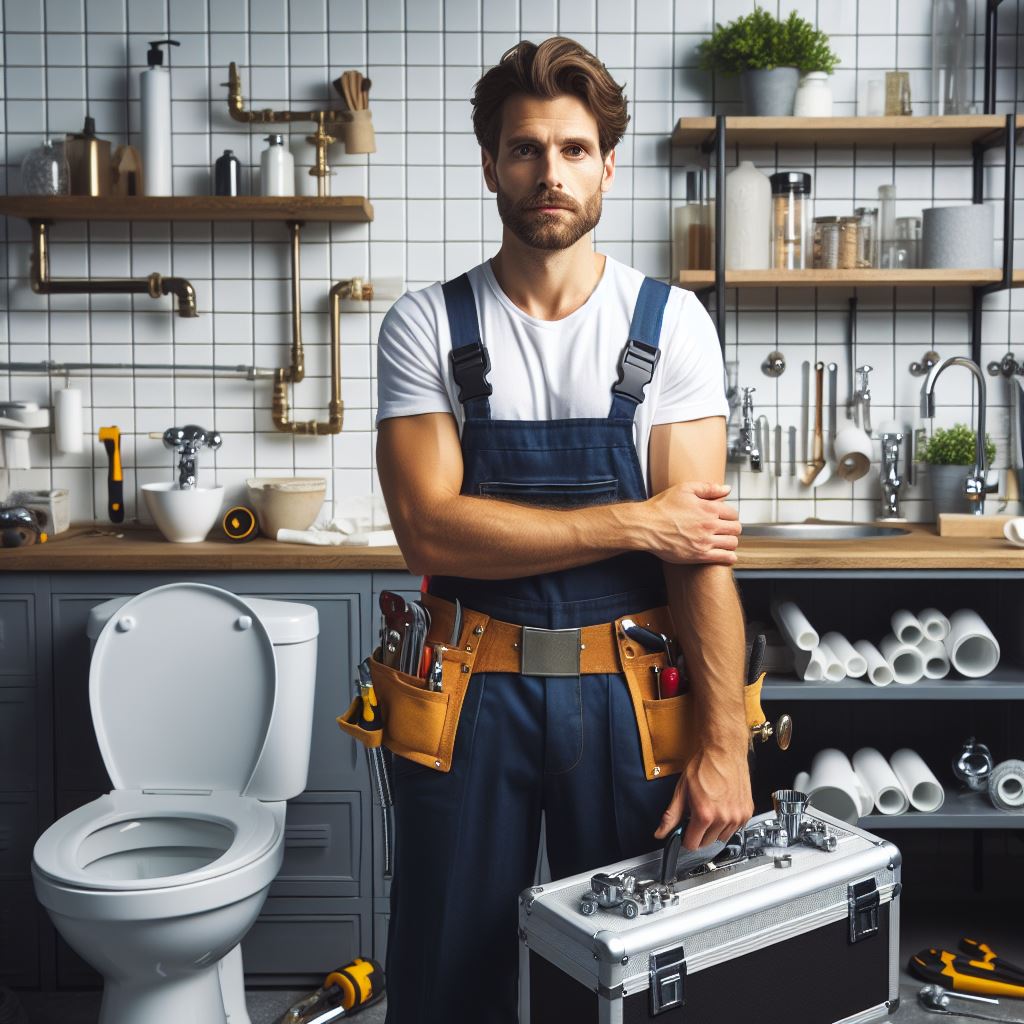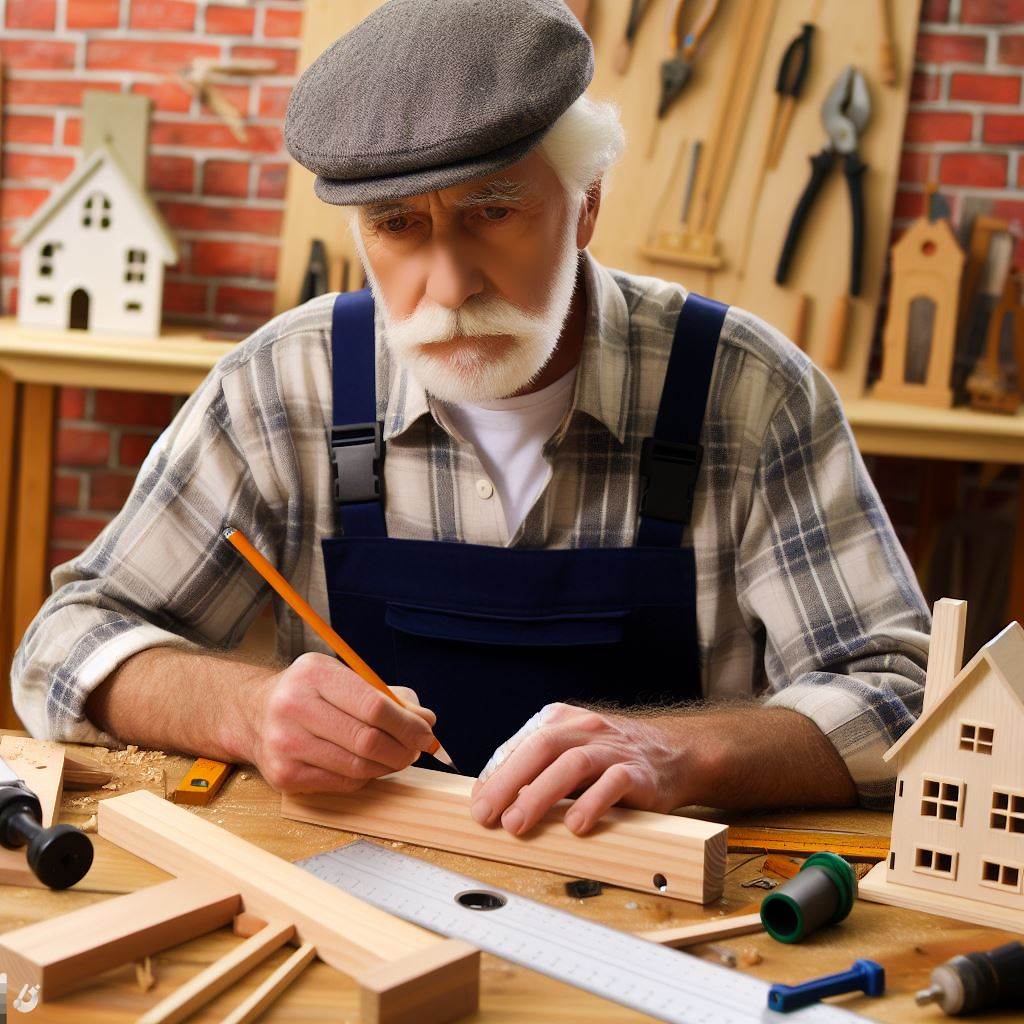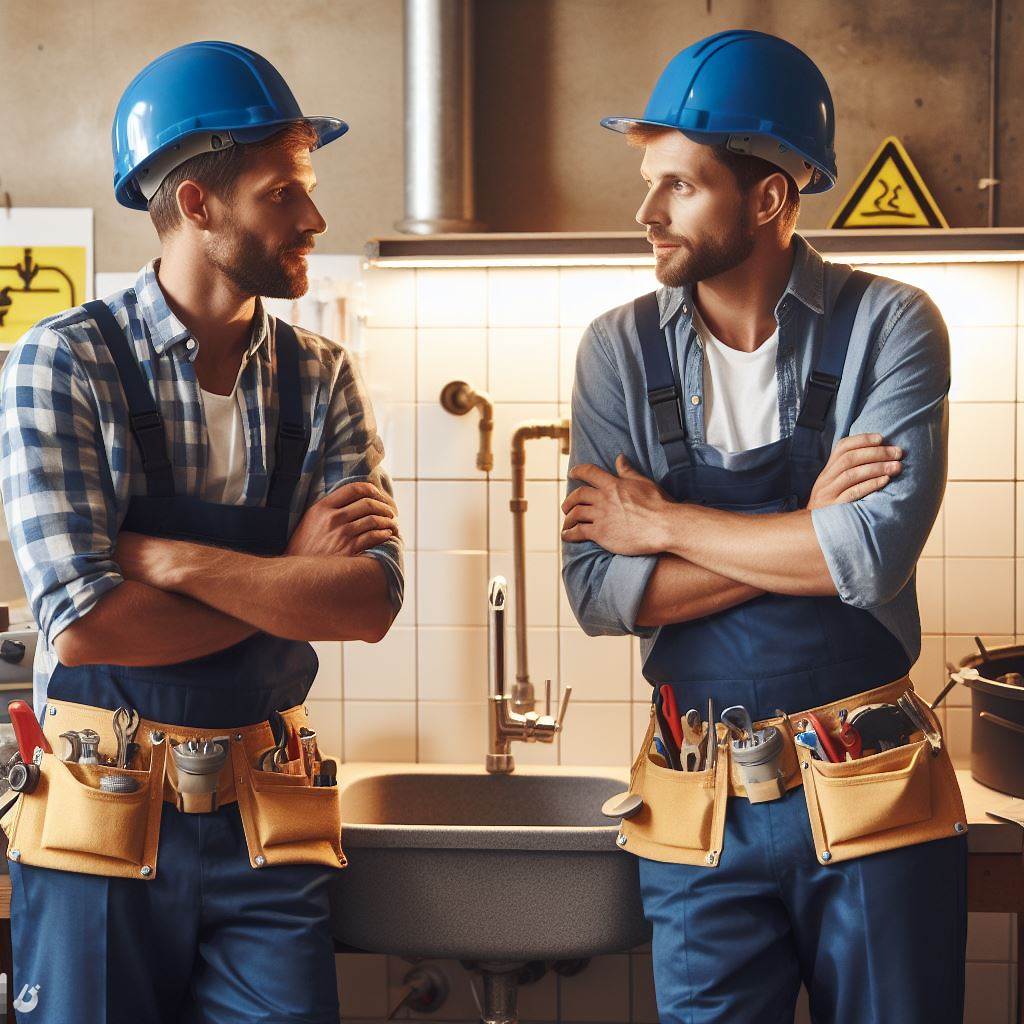Introduction
The historical evolution of plumbing in the UK has played a significant role in shaping society.
Plumbing encompasses the system of pipes, fixtures, and fittings that provide water supply and sanitation to homes, businesses, and public buildings.
Plumbing is crucial for maintaining public health and hygiene standards. It ensures the delivery of clean water for drinking, cooking, and sanitation purposes.
Without an efficient plumbing system, diseases spread through contaminated water would be rampant.
Plumbing also enables the removal of waste and sewage, preventing the accumulation of harmful substances in living spaces.
Furthermore, plumbing facilitates economic growth by enabling industries to have access to water for production processes.
It supports irrigation systems that aid in agriculture and wastewater treatment facilities that protect the environment.
As society evolved, so did plumbing practices in the UK.
From the ancient Romans’ intricate aqueducts to the advancements in pipe materials during the Industrial Revolution, plumbing has continuously adapted to meet the changing needs of communities.
The development of indoor plumbing in the 19th century brought unprecedented convenience and improved living conditions for individuals.
In short, the historical evolution of plumbing in the UK has been essential for public health, hygiene, economic growth, and overall societal progress.
It is a testament to human ingenuity and the continual development of systems to enhance our quality of life.
Early Plumbing Practices
Early plumbing practices in ancient civilizations, such as the Romans and Greeks
Ancient civilizations like the Romans and Greeks had early plumbing systems.
These civilizations used plumbing in public baths and also in aqueducts.
During this period, advancements in plumbing technology were made.
Personalized UK Career Consulting
Receive tailored career guidance designed just for you. Get actionable steps and expert support to boost your career in 1-3 days. Take control of your career now.
Get StartedAncient civilizations like the Romans and Greeks were pioneers in developing early plumbing systems.
These ancient plumbing practices formed the foundation for the modern plumbing systems that we have today.
Let’s take a closer look at how plumbing was utilized in these ancient cultures and the advancements made in plumbing technology during this period.
Plumbing in Public Baths and Aqueducts
The Romans and Greeks recognized the importance of having a reliable water supply system.
Plumbing was used extensively in public baths and aqueducts, which played a vital role in providing a constant water supply to cities and towns.
- Public Baths: Baths were an integral part of ancient Roman and Greek societies. These baths were equipped with elaborate plumbing systems. Water was supplied through a network of pipes to different areas of the baths, including hot and cold water baths, steam rooms, and even swimming pools.
- Aqueducts: Aqueducts were monumental structures used to transport water over long distances. The Romans engineered a remarkable network of aqueducts, some of which spanned several miles. These aqueducts utilized gravity to deliver water to cities, towns, and even remote areas.
Advancements in Plumbing Technology
During the ancient civilizations of Rome and Greece, significant advancements were made in plumbing technology.
These advancements revolutionized the way water was supplied and utilized.
- Pipe Systems: The Romans introduced an extensive pipe system made of lead, clay, and stone. This pipe system helped transport water efficiently, providing a stable water supply to public baths, homes, and even fountains.
- Water Treatment: Both the Romans and Greeks developed water treatment techniques. They used filtration methods, settling tanks, and even silver as an antibacterial agent to purify the water before distribution.
- Waste Removal: Plumbing systems in ancient Rome and Greece also included waste removal systems. Sewage was carried away through an intricate network of sewer pipes, helping maintain sanitation and hygiene in cities and towns.
The early plumbing practices in ancient civilizations like the Romans and Greeks laid the groundwork for the development of modern plumbing systems.
These civilizations understood the importance of a reliable water supply and the need for proper sanitation.
The advancements made during this period in plumbing technology were remarkable and continue to influence plumbing practices today.
Read: UK Architecture Laws: What Aspiring Architects Must Know
Medieval and Renaissance Period
During the medieval and Renaissance periods, the role of plumbing was crucial in castles, monasteries, and palaces.
The role of plumbing in castles, monasteries, and palaces
Plumbing in castles played a vital role in maintaining hygiene and providing water for various purposes.
Castles had plumbing systems that carried water from nearby springs or wells into the castle.
Your Dream Job Starts with a Perfect CV
Get a tailored CV and cover letter that captures your unique strengths and stands out in your industry. Let us help you make an unforgettable first impression.
Get StartedThe plumbing in castles aimed to provide water for drinking, cooking, bathing, and sanitation purposes.
In many castles, the plumbing systems were designed to bring water to different levels of the castle, allowing easy access for the inhabitants.
The plumbing in castles often consisted of lead or clay pipes that were interconnected to create a network.
These pipes transported water from the source to various locations within the castle through a gravity-based system.
The use of gravity and piping systems in these structures
Gravity played a significant role in delivering water to higher floors in the castle, as the pipes were installed at specific angles.
Castles also had chambers or cisterns for storing water, ensuring a steady supply during times of siege or limited access to water sources.
Monasteries also relied on plumbing systems for their daily water needs and maintaining cleanliness within the establishment.
Monasteries had piping systems that carried water from nearby sources to the various sections of the monastery.
Plumbing in monasteries facilitated the supply of water for drinking, cooking, gardening, and irrigation purposes.
Monasteries often had advanced plumbing systems compared to other structures of the time due to their association with knowledge and innovation.
Palaces during the Renaissance period saw significant advancements in plumbing technology.
The Renaissance era witnessed the use of lead pipes instead of clay pipes, making the plumbing systems more durable.
Notable advancements and innovations in plumbing during the Renaissance era
Notable advancements in plumbing during the Renaissance included the invention of the flushing toilet by Sir John Harrington in 1596.
This invention marked a significant improvement in sanitary conditions and led to further developments in plumbing technology.
Optimize Your LinkedIn for Success
Boost your LinkedIn profile with a professional bio, keyword-rich headline, and strategic recommendations that attract recruiters. Stand out from the crowd and get noticed.
Optimize NowThe Renaissance period also saw the emergence of water closets and the use of elaborate plumbing fixtures in palaces.
These advancements in plumbing technology added to the luxury and comfort of the palaces, showcasing the wealth and extravagance of the ruling class.
Plumbing during the Renaissance era became more sophisticated, with complex systems of pipes and valves.
Innovations in plumbing also included the use of pumps and water wheels to provide a reliable water supply to palaces and other structures.
In brief, plumbing played a crucial role in castles, monasteries, and palaces during the medieval and Renaissance periods.
The use of gravity and advanced piping systems ensured a steady water supply for various purposes.
Notable advancements and innovations in plumbing during the Renaissance era further improved sanitary conditions and added to the comfort and luxury of palaces.
Read: K CAD Tech Salaries: Expectations vs. Reality
Industrial Revolution and Plumbing
The Industrial Revolution, which started in the late 18th century, had a profound impact on the development and advancement of plumbing in the UK.
Impact of Industrial Revolution on Plumbing:
- The Industrial Revolution brought about significant technological advancements that influenced plumbing.
- Mass production of iron and other materials allowed for the manufacture of pipes and fittings on a large scale.
- Improved transportation systems made it easier to distribute plumbing materials to different parts of the country.
- The increase in urbanization and population due to industrialization created a higher demand for plumbing services.
- Industrialization also led to the development of new industries that required efficient plumbing systems, such as factories and mills.
Introduction of Indoor Plumbing and Water Supply Networks
- Indoor plumbing became more prevalent during the Industrial Revolution.
- Before this period, most houses relied on wells, rivers, or communal water sources for their water supply.
- The need for a more convenient and reliable water supply led to the establishment of water supply networks.
- Cities started building reservoirs, water mains, and pumping stations to provide clean water to households and businesses.
- These water supply networks were often connected to indoor plumbing systems, allowing for the distribution of water throughout buildings.
Significance of the Sanitary Movement
- The Sanitary Movement was a response to the unsanitary living conditions in cities during the Industrial Revolution.
- It aimed to improve public health and hygiene by promoting the importance of clean water, proper sanitation, and waste disposal.
- Plumbing played a crucial role in implementing the measures advocated by the Sanitary Movement.
- Sanitary reforms led to the installation of better drainage systems, sewers, and waste disposal mechanisms.
- These improvements significantly reduced the spread of diseases like cholera, typhoid, and dysentery.
In essence, the Industrial Revolution revolutionized the field of plumbing in the UK.
It introduced technological advancements, paved the way for indoor plumbing and water supply networks, and brought about reforms for public health and hygiene through the Sanitary Movement.
Read: Famous UK Architects and Their Signature Works

Modern Plumbing Systems
Modern plumbing systems in the UK have undergone significant development over the years.
The integration of technology has played a crucial role in enhancing plumbing practices, promoting efficiency, and improving hygiene standards.
Development of Modern Plumbing Systems
- The advancement in plumbing systems can be attributed to the Industrial Revolution in the 19th century.
- New techniques and materials emerged, leading to improved pipe fittings and water distribution systems.
- The invention of the flush toilet by Sir John Harington in the late 16th century laid the foundation for modern plumbing.
- In the 19th century, indoor plumbing became more common, replacing outdoor communal water sources.
- During this time, plumbing systems started incorporating water tanks, faucets, sewage drainage, and water closets.
- By the early 20th century, plumbing systems had become more standardized, allowing for better hygiene and waste disposal.
Integration of Technology in Plumbing
- Technological advancements have revolutionized plumbing practices, offering improved efficiency and sustainability.
- Water heaters are widely used in modern plumbing systems to provide hot water for domestic purposes.
- These heaters use various means such as gas, electricity, or solar energy to heat the water.
- Such systems ensure a continuous supply of hot water for bathing, washing, and other purposes.
- Water treatment plants have also become essential components of plumbing systems in the UK.
- These plants purify and filter the water supply, making it safe for consumption and minimizing health risks.
Regulations and Standards for Plumbing in the UK
- To maintain quality and safety, the UK has established regulations and standards for plumbing systems.
- Plumbers and plumbing products must comply with these regulations to ensure proper functioning and avoid hazards.
- Approved Document G, issued by the UK government, outlines the requirements for sanitation, hot water safety, and water efficiency.
- Water Regulations Advisory Scheme (WRAS) ensures that plumbing materials and fittings meet rigorous quality standards.
- Government authorities have also set guidelines for wastewater disposal, aiming to protect the environment and public health.
- These regulations and standards contribute to sustainable plumbing practices and improve overall water management.
In summary, the development of modern plumbing systems in the UK has been a result of historical progress and technological advancements.
The integration of technology, such as water heaters and treatment plants, has enhanced the efficiency and safety of plumbing practices.
Strict regulations and standards ensure the quality and sustainability of plumbing systems, promoting hygiene and environmental protection.
As plumbing continues to evolve, it will likely adapt to new technologies and innovations, further improving its role in society.
Read: Major Plumbing Issues in UK Homes
Challenges and Future Trends
The challenges faced by the plumbing industry in the UK
The plumbing industry in the UK faces several challenges that hinder its growth and development.
One of the major challenges is the shortage of skilled plumbers, which leads to a high demand and increased costs for plumbing services.
Another challenge is the aging infrastructure, with many old buildings requiring extensive plumbing repairs and upgrades.
Additionally, the constant changes in building regulations and standards pose challenges for plumbers to stay updated and compliant.
The importance of sustainability and energy-efficient plumbing practices
The importance of sustainability and energy-efficient plumbing practices cannot be overstated.
Sustainable plumbing not only conserves water but also reduces energy consumption and environmental impact.
The growing awareness about sustainability has led to an increased demand for eco-friendly plumbing solutions.
Energy-efficient plumbing practices, such as installing low-flow fixtures and using energy-efficient water heaters, help reduce utility bills and conserve resources.
Emerging trends or innovations in the field of plumbing
In recent years, there have been significant innovations and emerging trends in the field of plumbing.
One such innovation is the use of smart plumbing technology, where sensors and automation systems monitor and control water usage.
Smart plumbing systems can detect leaks, adjust water temperature, and provide real-time data on water consumption.
Another emerging trend is the adoption of green roofs, which integrate vegetation and water management systems to improve insulation and reduce stormwater runoff.
Green roofs not only contribute to sustainability but also enhance the aesthetic appeal of buildings.
The use of new materials, such as plastic piping systems, has also gained popularity in the plumbing industry.
These lightweight and durable materials offer advantages in terms of installation, maintenance, and corrosion resistance.
The plumbing industry is also witnessing advancements in wastewater treatment technologies.
Greywater recycling systems and advanced filtration techniques are being implemented to reduce water wastage and promote water reuse.
Furthermore, the integration of renewable energy sources, such as solar water heating systems, is becoming more prevalent in plumbing installations.
Solar water heaters utilize solar energy to heat water, reducing reliance on traditional energy sources and lowering carbon emissions.
As sustainability continues to be a priority, future trends in plumbing are likely to focus on improving efficiency and reducing environmental impacts.
Innovations in plumbing fixtures, insulation, and pipework will aim to minimize water and energy wastage.
The use of digital technologies, such as remote monitoring and predictive analytics, will enable efficient maintenance and troubleshooting of plumbing systems.
Plumbing professionals will also need to adapt to changing regulations and stay updated on advancements in eco-friendly practices.
In a nutshell, the plumbing industry in the UK faces challenges related to skills shortages and aging infrastructure.
However, the importance of sustainability and energy-efficient practices is driving innovations and emerging trends in plumbing.
Smart technology, green roofs, renewable energy integration, and advanced wastewater treatment systems are shaping the future of plumbing.
By embracing these trends and addressing the challenges, the plumbing industry can contribute to a more sustainable and efficient built environment.
Conclusion
Overall, the historical evolution of plumbing in the UK has showcased significant progress and advancements.
Plumbing has played a crucial role in the UK’s history, providing clean water, sanitation, and improving public health.
The impact of plumbing on society cannot be underestimated, as it has transformed living standards and contributed to the growth and development of cities.
From the ancient Roman aqueducts to the Victorian era’s elaborate plumbing systems, plumbing has consistently evolved to meet the changing needs of society.
In the modern era, plumbing continues to revolutionize and adapt to new technologies and innovations.
With the rise of smart homes and sustainable practices, plumbing has embraced eco-friendly solutions such as water-saving fixtures and greywater recycling systems.
This constant evolution emphasizes the industry’s commitment to improving efficiency, reducing waste, and creating a more sustainable future.
Plumbing has been engrained in the fabric of the UK’s history and has significantly impacted society.
From basic sanitation to sophisticated plumbing systems, it has provided essential services that have contributed to the advancement and well-being of people.
As plumbing continues to evolve, it remains an integral part of our lives, ensuring that we have access to clean water, efficient sanitation, and a healthier environment.
The continuous evolution of plumbing reflects the adaptability and innovation of the industry, leaving us with exciting possibilities for the future.
[E-Book for Sale]
500 Cutting-Edge Tech Startup Ideas for 2024 & 2025: Innovate, Create, Dominate
$19.99 • 500 Tech Startup Ideas • 62 pages
You will get inspired with 500 innovative tech startup ideas for 2024 and 2025, complete with concise descriptions to help you kickstart your entrepreneurial journey in AI, Blockchain, IoT, Fintech, and AR/VR.




